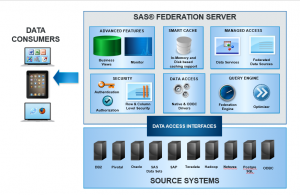“Are you serious? You REALLY want run your queries in our operational patient system first thing in the morning? That is when we have most patients admitted and their data being updated. I mean, analytics is great, but you will kill our service levels because of your daily queries!”, raged the Operational Data Manager of a major hospital to an analytics consultant.
A valid question, since during the requirements phase of the project they realized that it’s not enough to build an analytical data mart and refresh the data nightly. They were aiming for operational analytics and needed to have the freshest data possible to provide situation monitoring of the hospital's patient load from numerous viewpoints such as patient data, HR and staffing, availability of premises, billing of services, avaliability of materials etc.
The helping hand of data virtualization
While the characters in this example had not realized it yet, data virtualization could provide them a helping hand with frequently updated cached views, some of them In-Memory for rapid performance. They would be able to combine heterogeneous data sources without actually pulling the data out into a data mart. And this being a hospital where patient data privacy is paramount, so data masking capabilities for the unique identifiers (like the patient’s Personal Identity Code) would be more than helpful.
All this can be achieved with data virtualization that SAS provides with SAS Federation Server solution. A logical virtualization layer between the source systems and the data consumers. It helps you to speed up putting your data into use, to better monitor and protect the use of your data. I can be used to take a load off the already strained source systems by offering a cached view (on-disk or in-memory) that is refreshed in a cycle that fulfills the real-time requirements for your use case. And in case you have run into data quality problems in source systems that are outside your control, you can run data quality corrections in the data virtualization layer.
SAS Federation Server is integrated with SAS Metadata so your existing group-level authentication and authorization profiles can be utilized and synchronized with your existing authentication provider such as Active Directory. It offers a wide variety of data source connectors both standard and native. Data consumers can access the data through ODBC client for all productivity applications such as MS Excel and data consuming systems may access through JDBC and REST interfaces. And of course your familiar SAS user interfaces such as SAS Enterprise Guide will connect directly to federated data sources.
Data protection
For any organization collecting and managing personal data within EU it is good to notice that the EU Data Protection Reform moved forward in Dec 2015. This means that data protection and the controlling and monitoring of its usage are now more pressing matters. Data Virtualization can help with more granular access controls, detailed auditability and data masking capabilities to fulfill compliancy requirements.
Here you can read further information on SAS Federation Server and Data Virtualization in general.
Also check out this blog about the improvements we have put into the latest release of SAS Federation Server.

